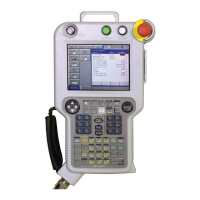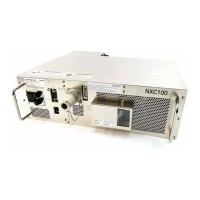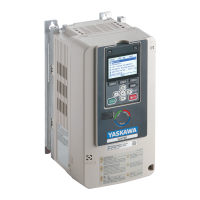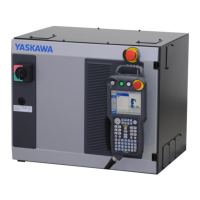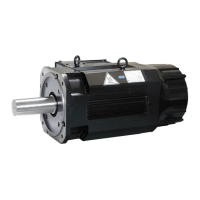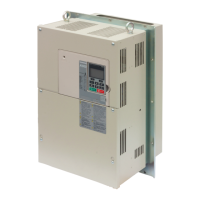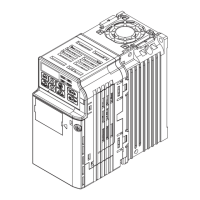3 Teaching
3.2 Teaching Operation
3-8
149235-1CD
RE-CSO-A031
Spline Interpolation
When performing operations such as welding, cutting, and applying primer, using the spline
interpolation makes teaching for workpieces with irregular shapes easier. The path of motion is a
parabola passing through three points. When spline interpolation is used for teaching a robot axis, the
move instruction is MOVS.
Single Spline Curve
When a single spline curve movement is required, teach the spline interpolation for three points, P1 to
P3, as shown in the figure below. If joint or linear interpolation is taught at point P0, the point before
starting the spline interpolation, the manipulator moves from P0 to P1 in a straight line.
Continuous Spline Curves
The manipulator moves through a path created by combining parabolic curves. This differs from the
circular interpolation in that steps with identical points are not required at the junction between two
spline curves.
When the parabolas overlap, a composite motion path is created.
P2
P3 P4P0 P1
Automatically becomes
a straight line.
Interpolation Type for a Single Spline Curve
Point Interpolation Type Instruction
P0 Joint or Linear MOVJ
MOVL
P1
P2
P3
Spline MOVS
P4 Joint or Linear MOVJ
MOVL
P0 P1
P5 P6
P2
P3
P4
Identical-point
step not required
Interpolation Type for Continuous Spline Curves
Point Interpolation Type Instruction
P0 Joint or Linear MOVJ
MOVL
P1
to
P5
Spline MOVS
P6 Joint or Linear MOVJ
MOVL
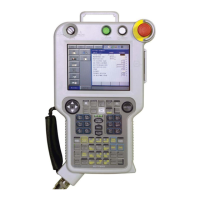
